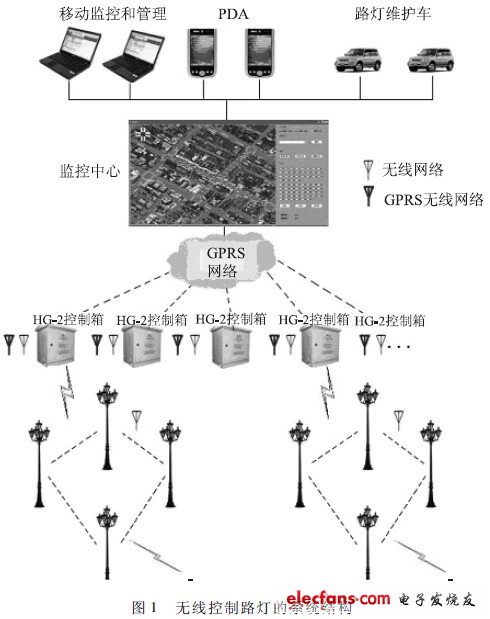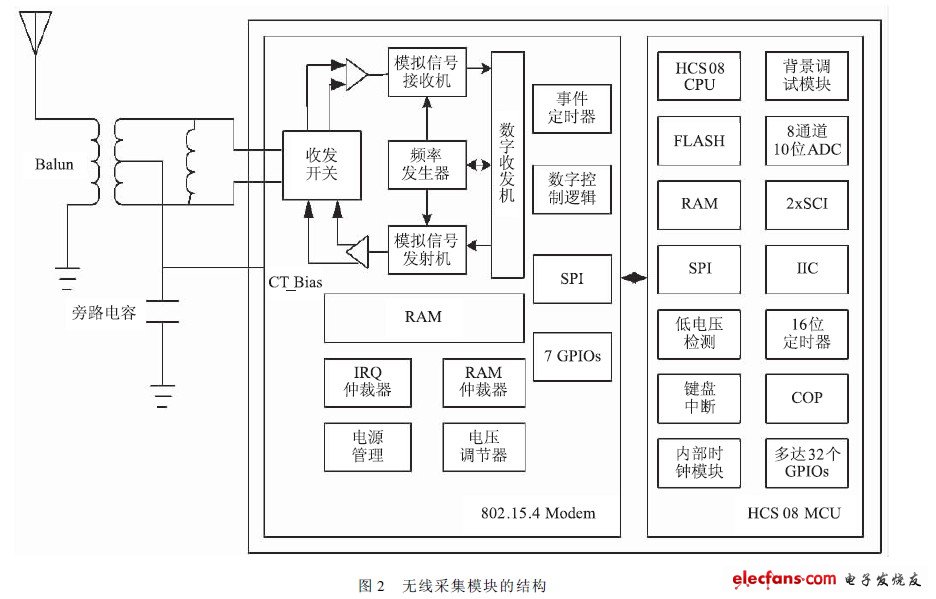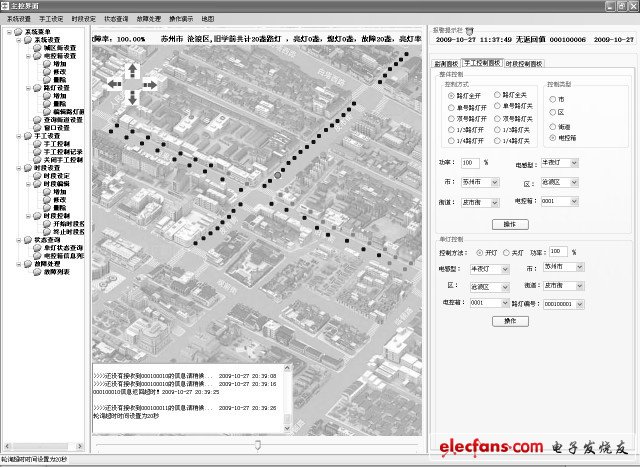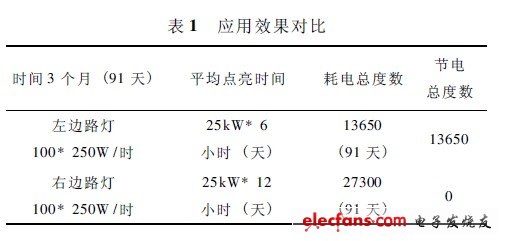1 Introduction
With the development of urban economy and scale, various types of roads are getting longer and longer, the number of motor vehicles is increasing rapidly, and the traffic flow at night is also increasing. The quality of road lighting directly affects traffic safety and urban development. How to improve the quality of road lighting, reduce energy consumption, and achieve green lighting has become a key issue in urban lighting. The primary task of road lighting is to provide safe and comfortable lighting brightness on the basis of saving public energy, so as to reduce traffic accidents and improve transportation efficiency. Due to the limitations of the infrastructure, there is currently a lack of street-level communication links. Street light control methods generally only control the entire road in a unified manner, and cannot measure and control every light. Based on the Internet of Things, this paper designs an embedded wireless street lamp control module to realize the wireless autonomous networking of each street lamp, so that each street lamp can be telemetered and remotely controlled, and some units in the street lamp facility (such as electronic ballast Device, etc.) to achieve steplessly adjustable brightness (or illuminance) of street lamps from 30% to 100%. Under the condition of ensuring road lighting quality, improving identification and visual comfort, according to the ambient light intensity and time period, saving electricity 20 ~ 30%.
2 System structure
The structure of the road lighting system based on the Internet of Things is shown in Figure 1. By embedding a wireless communication module in each street light, they make their own network, accept the command of the control center and feed back the status of the street light to the control center; HG-2 control The box uses ZigBee technology to communicate with all street lamps under the jurisdiction of the road, and uses GPRS to communicate with the control center. According to the instructions or time of the control center and the brightness of the sunlight, each box is issued a control command (street lights on, off, illumination (power level), etc. ), Automatically adjust the power balance of the entire road; the control center is composed of a server, a large-screen display, and the CenterView central control system software platform. The CenterView central control system software platform uses a 3D design, which is observed and controlled from a bird’s-eye view through zoom transformation. The lighting situation of the entire city, a street, a road, or even a street lamp; mobile computing tools (laptops, PDAs, mobile phones) and street lamp maintenance vehicles can also be remotely telemetry and remotely controlled through the control center.

3 Wireless communication module
3.1 Module design
The MCU of the wireless communication module is MC13213 of Freesclae Company. MC13213 adopts SiP technology to integrate MC9S08GT main control MCU and MC1320x RF transceiver in 9 & TImes; 9mm LGA package. MC13213 has 4KB RAM, 60KB FLASH, 1 serial peripheral interface (SerialPeripheralInterface, SPI), 2 asynchronous serial communication interfaces (SerialCommunicaTIonsInterface, SCI), 1 keyboard interrupt module (KeyboardInterrupt, KBI), 2 Timer / pulse width modulation module (TImer / PWM, TPM), an 8-channel 10-bit analog-to-digital converter (Analog / DigitalConverter, ADC), and up to 32 GPIO ports. as shown in picture 2.

The wireless communication module adopts ZigBee technology, IEEE802.15.4 protocol, and the communication coverage radius can reach 150m. It can communicate with any self-organized network of any street lamp node within its coverage area. In addition to achieving the connection of the street lamp, it also has adjustment The power output of the electronic ballast (30% to 100%) realizes energy saving and green lighting, detects the current, voltage, power factor of the power supply line, and the working status of each lamp. When a failure occurs (such as lamp damage, lamp When the rod hits or is damaged by man-made damage), it can alarm the monitoring center and relevant departments in real time.
The wireless communication module is also designed for rain, moisture, lightning and electromagnetic interference, and fully considers the convenience of installation, simple maintenance and recoverability (connecting two wires to achieve street lamp-level wireless control, removing two The root line is restored to its original state), and can be embedded in different positions of the street lamp (the bottom of the lamp post, the lamp post, and the lampshade).
3.2 Communication protocol
The communication protocol of the wireless communication module is as follows: the lighting is numbered in order of road segments, and "hand in hand" communication between nodes is realized through command forwarding and status return. Command forwarding mechanism: Each node uses a bitmap structure to record which frames have been forwarded (bitmaps can represent up to 256 frames). If a node receives a command frame, it determines whether the frame has been forwarded by the node, such as If it has been forwarded, the frame is discarded (the node only forwards the received command frame without modifying the content of the frame), thereby ensuring the fastest speed of controlling a line, and effectively preventing the failure of a node from affecting the entire line The work of the line; the status return mechanism: after the command frame is sent to the designated node, the designated node receives the command and immediately returns to the state; forwarding rules: only the node number is smaller than the target node number, the status return process is reversed.
3.3 Connection with central monitoring
A transmission communication link is composed of several ZigBee nodes, and a cluster node is set in the middle of these nodes (one or more cluster nodes can be set on a road). Its function is to communicate with the control center by GPRS (command acceptance and Status returns), the cluster node uses Freescale's 32-bit CodeFire series MCF52223 chip as the control unit, and GTM900B (Huawei GPRS communication module) and EM770W (Huawei WCDMA 3G communication module) as the long-distance wireless communication module. The MCF5222x series is built using the commonly used V2ColdFire core, and its performance is up to 76MIPS (Dhrystone2.1) at 80MHz. The interface functions include: 1 MiniUSB interface, support USBOTG function, 3 2 wire serial ports, 1 microphone input interface, 1 HEADSET input / output interface, 1 HANDSET input / output interface, 1 8Ω / 16Ω speaker output interface, 1 132 * 96 dot matrix LED, 1 5 * 5 key keyboard, support RTC, ADC, PIT & GPT, PWM Etc .; GTM900B and EM770W complete long-distance GPRS communication.
4 Control center software design
The software design platform of the control center is Windows2003, the development tool is Microsoft VisualStudio2005, the database uses SQLServer2005, and the geographic information system is combined. After obtaining the characteristic information such as the position and shape of streets, buildings, and street lamps, the design is based on street lamps. The 3D virtual city dynamically displays the lighting effect of the road on the large screen of the control center, and can observe the lighting situation of the entire city, street and even each street lamp through geometric transformations such as panning, zooming in and zooming out. The software mainly has 5 functional modules: system settings, intelligent control, power accounting, fault handling and emergency plans. There are four types of city, district, street and electric control box in the system settings; the street lamp is set with the location, model, production unit, construction unit, maintenance person in charge, installation date, cleaning and maintenance date, etc .; There are all on, all off, single street lights on, single street lights off, double street lights on, double street lights off, 1/3 street lights on, 1/3 street lights off, 1/4 street lights on, 1/4 street lights off , Intelligent control, and other 11 control methods; time setting can be set according to different cities and different seasons, different ways of lighting; intelligent control has two aspects: for road sections with electronic street lights installed, according to seasonal changes and weather conditions, Real-time sampling of ambient light intensity to intelligently adjust the lighting brightness of street lamps; at night, especially late at night, when it is detected that the flow of cars and pedestrians is very sparse, appropriately reduce the lighting brightness of the road without affecting the recognition, Save electricity consumption; electricity accounting can calculate and calculate electricity consumption of cities, districts, streets, electric control boxes and even each street lamp; troubleshooting is the damage to lamps, power failure, Phase, over-current, over-voltage, three-phase unbalance and man-made damage, etc., immediately generate a fault report after reporting to the monitoring center; another function of fault handling is by road segment and time period (year, quarter, month) Statistics of lighting rate, failure rate, efficiency of each failure handling (average repair time); emergency plan is to formulate emergency plans for some emergencies, under special circumstances, provide appropriate road lighting as much as possible to ensure people's lives and property Security. Figure 3 is one of the operating interfaces of the control center software.

5 practical applications
The road lighting system of the Internet of Things has been installed and tested in a national industrial park since May 2009. The installation environment is 100 street lights on both sides of the same road, and the 100 street lights on the left side of the road are intelligently controlled by wireless sensors The total cost increases by 24600.00 yuan. The 100 street lights on the right side of the road adopt the conventional control method (single and double numbers are turned on at 18: 30-6: 30 in the middle of the night). The test results are shown in Table 1.

It can be seen from Table 1 that using the intelligent control of the Internet of Things, through actual testing, the 100 street lights controlled by the Internet of Things can save 15925 degrees of power in 91 days. Under normal circumstances, all investments can be recovered within six months of product investment. . The reduction of power consumption has the following factors: the adjustment of the turn-on and turn-off time, the control method of the street lights on the right side of the road is based on the seasons to set the opening and closing time (timing control) and is full power on and off, the control method of the street lights on the right side is The ambient light intensity and season automatically control the opening and closing time. When it is turned on, because there is still strong ambient light on the road surface, the street light works in the way of supplementary light, gradually increasing the illumination intensity, and the street light is closed to control similarly; late night control mode, due to late night time The power load of enterprises and residents is reduced, the voltage of low-voltage power grids is increased, and the street lights (right side of the road) under conventional control methods are extremely bright and dazzling, often causing excessive lighting, which not only greatly increases power consumption, but also leads to the actual service life of lamps and electrical appliances. Rapidly decline, greatly increase the amount of maintenance and maintenance costs, late night control mode (left side of the road), use reduced power lighting, not only reduce power consumption, but also improve road lighting quality and visual comfort, extend the actual life of lamps and electrical appliances; road Intelligent control of lighting Special sections of a curve, accident-prone areas, etc., an appropriate increase in the brightness of the illumination, the remaining sections appropriate to reduce the illumination brightness.
After adopting the intelligent street lamp control of the Internet of Things, the automatic fault detection and alarm have the advantages of good real-time performance and strong reliability, which greatly shortens the time and labor intensity of periodic inspection by manual inspection.
6 Conclusion
Advanced road lighting can not only improve the city's image, improve transportation efficiency, reduce traffic accidents, but also save a lot of public electricity consumption. However, for most cities, due to the lack of necessary infrastructure (street-level communication links), advanced control methods cannot be realized, and the emergence and application of the Internet of Things (Internet of Things) effectively solves the above problems. This article is based on wireless sensor networks, Choose Freesclae's MC13213 chip and design an embedded wireless communication module to make each street light of the whole road independently networked. Using Freescale's MCF52223 chip, Huawei's GTM900B and EM770W as remote communication module modules, the street light was realized Telemetry and remote control have high practical application value for saving public resources and building digital and economical cities.
WS2811 digital led strip is single signal transmission Led, the same as WS2812B and SK6812 with three-channel circuit,
But It is difference,the WS2811 IC can be inside or outside. and the working Voltage is DC5-24V, can be program and apply to all kinds of electronic products, electrical equipment running horse lamp, led pixel screen etc.
It is the most common product and demand on the market.
Waterproof Strip,WS2811 RGB LED Strip,WS2811 LED Strip,WS2811 Digital LED Strip
SHEN ZHEN SEL LIGHTING CO.,LTD , https://www.sel-lighting.com